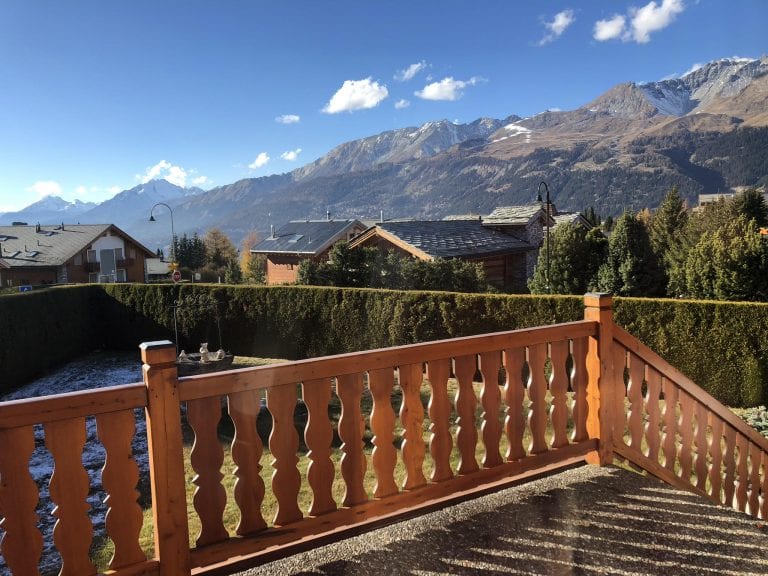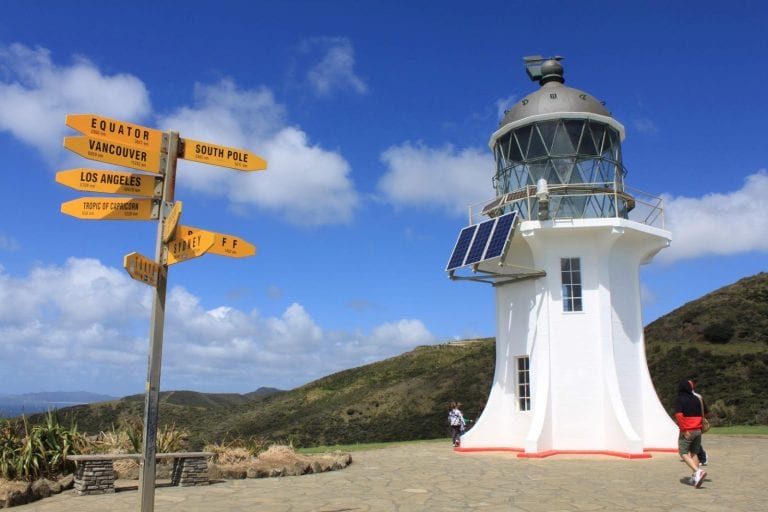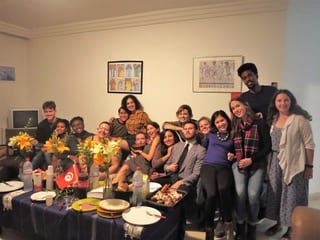By Beatrice Mount
Around this time of year, my parents normally send me one simple text message for the holiday season: “email me what you want for christmas so I can order it on time.” It’s rather straightforward, and indeed a little bit abnormal, but provides the best representation for how my family views the holiday season. Specifically: we’ve never really been big fans. It’s not that we don’t celebrate chirstmas, but the only holiday tradition that avoided falling to the wayside was our visit to a family friend’s christmas party. OF course, that fell apart this year, when my parents traded out California’s great, smokey sunsets for the slightly less smokey sunsets of Oregon. We just don’t “do” christmas well.
In contrast, the minute mid-November hits, the Dutch enter a holiday frenzy. The streets are decorated with intricate, twinkling lights that illuminate the cobblestone and symbolise the welcoming of the new season. Beginning in mid-November and lasting through the first week of January, Dutch city centers and squares are transformed into Christmas markets. Each town has their own unique array of edible goods and non-edible gifts, ranging from scarves to rubber ducks to kettlekorn to loempia. Maastricht even has it’s own ice rink and Ferris wheel!
While the Christmas markets bring together the dutch, in recent years, the holiday season has been marked by a debate regarding one controversial holiday figure: Zwarte Piet. For those of you who don’t know, Zwarte Piet, or “Black Pete," is, explained in simplified terms, the dutch’s racist answer to Santa’s little helper. In more detailed terms, the Dutch Christmas holiday focuses not on Santa, but on Sinterklaas, or Saint Nicholas. Instead of having multiple “elves" who help him deliver presents, he has multiple helpers, who undeniably look a lot like racist caricatures of black people. Piet has an afro, a black (literally black) face, and large, red lips. Beyond that, Piet also wears “moorish” dress, based off of 16th-century noble attire, and a single earring. Zwarte Piet originally was portrayed as an unintelligent helper, however, since the 19th-century origins, he’s now grown into just a lovable, absent-minded character.
And oh boy, do the Dutch love him. Zwarte Piet is inescapable. He’s there, staring at you while you walk from class to class, peering out of the windows of hairdressers, children’s toy stores, and coffee shops. Furthermore, people love to dress up as Zwarte Piet for part of the holiday—donning wigs and drawing on big, red lips on top of blackened faces.
As an American, this holiday tradition scares me. It’s made me feel lucky to live in a country where the work of black civil rights leaders have changed the norm so blackface is, for the most part, unacceptable. You, for the most part, won’t get egged for calling some frat boys interpretation of Kanye West racist—rather, it’s more likely that that frat boy will be fired from his job.
The Netherlands is something else, completely. As of 2018, 88% of the Dutch public did not perceive Zwarte Piet as racist or associate him with slavery. While interpretations of Zwarte Piet now include just rubbing coal on your face, the fact that the character is so widely accepted represents a larger issue with Dutch society. It’s something I’ve noticed while living here, especially when visiting museums or talking to other university students about problems within American society.
While racism and sexism are something that people in America openly talk about, Dutch people just don’t really do that. The reason for this boils down to how we view multiculturalism in our construction of nationalism. In America, multiculturalism is relatively good. We’re the melting pot; our differences boil together to make the cheesy, artificial goo that is America. In a way, this recognition of multiculturalism allows us to talk about our differences. We’re not perfect, and we have a lot of problems, but we do have a large, multi-varied, and constant discourse regarding these problems.
Europe in general views multiculturalism as "niet zo goed." The concept of sameness is intrinsically linked to the concept of equality — you become equal by being the same. But that emphasis on sameness doesn’t create equality—it just tries to pave over the impavable, and by doing so ultimately reinforces problematic power structures and denies social progress. SO, although some of the Dutch I’ve met have claimed they “don’t have racism, unlike America,” my response has always been “you do, but you don’t talk about it.”
One of the easiest ways to see this, outside of but connected to Zwarte Piet, is through how various museums address colonization. While the Dutch may not have dealt with the civil war, the Dutch have had a long history of colonization and enslavement. They were heavily involved in the slave trade, shipping kidnapped African people to Spanish colonies in Brazil. They colonized South Africa and the East Indies, murdering indigenous persons and forcing enslaved Africans and Pacific Islanders to the same horrific treatments that Black Slaves in America had to deal with. And Zwarte Piet is undeniably connected to this history—he is, no matter how the culture tries to gloss over it—Santa's slave, not helper.
My interaction with the Dutch education system is limited. But based off of what I know from visiting museums, the history of colonization is portrayed as a “G” rated joke. Stolen objects and dioramas of apartheid settlements and Indonesian sugar farms are encased in glass, next to descriptions that avoid addressing the kind of orientalization and dehumanization that accompanied the actions. Importantly, Black and indigenous perspectives are missing from these narratives—rather the narrative acknowledges some bad stuff happened, but it’s ok because that was a while ago. Tackling this history means avoiding the white-washed, G-rating. And effectively tackling gives everyone the basis to have an easier discussion on Zwarte Piet.
There are a plethora of other issues Zwarte Piet symbolizes, importantly including the removal of voices of color from Dutch discourse. And, indeed, it’s by centering these voices of color and acknowledging difference that the Dutch can actually begin this process. That might start with museums, or it might start with the education system—as some Dutch teachers are already doing. But either way, white Dutch people need to listen to the people of color who’ve been angry with Piet for decades. The racism needs to be addressed, and Zwarte Piet needs to go, soon.
























